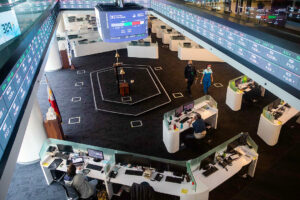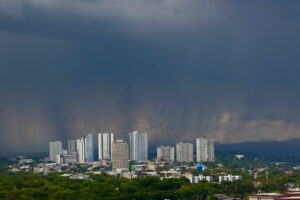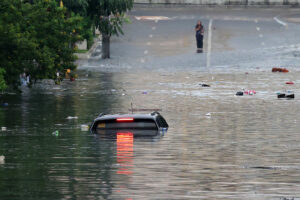Amari Neil B. Dimafeliz,18, first turned to artificial intelligence (AI) in 2023 when his small 3D-printing business started growing faster than he could manage.
Running a youth-led enterprise with limited manpower, he struggled to find employees willing to work for someone still in college. “My age has been an obstacle to hiring people, so I turned to AI because it’s not selective in who it’s performing for,” he said by telephone.
Instead of hiring extra staff, Mr. Dimafeliz invested in a PHP 100,000 printer with AI features that automatically checks the quality of his customized products, which include keychains, figurines, thesis prototypes, coasters, ballpens and pencil cases.
“On the operational side, our printers use artificial intelligence for precautionary measures when there are failures in printing,” he said.
AI also helps market his products. He uses it to generate captions and images for his small business’ social media pages, a task that once ate up hours of his time. For a full-time mechanical engineering student at Mapua University, AI has become a crucial tool for balancing academics with entrepreneurship.
Stories like Mr. Dimafeliz’s illustrate how AI could reshape the way micro, small and medium enterprises (MSME) operate.
MSMEs account for about 99% of all businesses in the Philippines, yet adoption of advanced digital tools remains low. As of 2021, only 14.9% of firms had integrated AI, according to the government think tank Philippine Institute for Development Studies (PIDS).
AI has the potential to transform these businesses, said Ian Jester M. De Vera, head of the research division at the University of the Philippines Institute for Small-Scale Industries (UP ISSI). “Some of the tasks of MSMEs are just repetitive, so if they’re going to leverage AI, they will do away with these tasks,” he told BusinessWorld by telephone.
AI can also help smaller firms scale operations and compete with larger corporations, said John Paolo R. Rivera, a PIDS senior research fellow. “By using AI, MSMEs can better compete with larger firms and participate in digital trade,” he said in a Viber message.
Among its practical benefits: AI can forecast demand, analyze customer behavior, and reduce overstock or shortages. It can personalize marketing strategies and improve logistics efficiency.
Beyond operations, AI can handle invoicing, payroll and appointment scheduling, reducing costs and human error. Virtual assistants and chatbots can also take over routine customer service inquiries, saving time for owners and staff.
AI may even help protect businesses from rising cyberthreats. MSMEs are often prime targets for ransomware and phishing attacks, noted Bambi Escalante, country manager at Fortinet Philippines.
Steep challenges
“Most small and medium businesses don’t have dedicated IT security teams, making it difficult to keep up with evolving threats,” she told BusinessWorld in an e-mailed reply to questions. “This is where AI becomes a game-changer — it automates routine security tasks and helps businesses stay ahead of cyber risks without needing extensive resources.”
A joint study by Google and Access Partnership estimates that if widely adopted, AI-powered products and solutions could unlock as much as P2.8 trillion in economic benefits for Philippine businesses.
Despite its promise, AI adoption among MSMEs faces steep challenges.
For one, resources remain tight. “Let’s face it, MSMEs have limited resources, and some of them are even cash-strapped,” Mr. De Vera said. “If AI would just add to their costs, maybe they would think twice about adopting it.”
Generational gaps also play a role. Many first-generation business founders remain hesitant to use AI themselves. “When I talk about AI, of course they’re amazed, but they instead want their children to learn how to use it, because they don’t know how to use it,” said Reynaldo C. Lugtu, Jr., president and chief executive officer (CEO) at consulting firm Hungry Workhorse.
Digital infrastructure is another major hurdle. Reliable internet access is still uneven across the country. “The foremost barrier is infrastructure, because it’s still a problem, especially in a developing country like the Philippines, to have a reliable internet connection,” Mr. De Vera said.
The Philippines ranked 56th out of 77 countries in Huawei Technologies’ 2024 Global Digitalization Index, classifying it as a “starter” in digital transformation.
MSMEs also often lack the data needed to fuel AI systems. “AI requires large datasets to function effectively, but many MSMEs struggle with limited or unstructured data,” Mr. Rivera said. This data gap also affects their access to credit, marketing insights and long-term planning.
To address these challenges, organizations are working to strengthen MSMEs’ digital skills. The UP ISSI offers training and mentorship programs, guiding entrepreneurs on responsible AI use, strategy development and data-driven decision making. It has also rolled out a business course covering AI systems, analysis tools and ethical frameworks.
Private firms are innovating as well. Peddlr, a smart point-of-sale (POS) app for small businesses, plans to integrate AI into its analytics and reporting features.
“It is on our product roadmap to incorporate this technology with our POS app, starting with the reports and analytics module,” Peddlr founder and CEO Nel Laygo said in an e-mailed reply to questions.
Mr. Laygo added that MSMEs should begin embedding AI proficiency into their workforce development. “They should start incorporating AI proficiency into internal training to upskill staff and include this as a requirement when hiring new talent, alongside proficiency in Microsoft Word, PowerPoint and Excel,” he said.
Experts say both the government and private sector need to step in by subsidizing AI tools, improving internet infrastructure, and promoting digital literacy. “Both sectors can also invest in digital literacy and training, so this will upskill MSME employees through courses and workshops that will improve their competence in using AI,” Mr. De Vera said.
While MSMEs worldwide are beginning to integrate AI into their operations, many owners remain cautious about overreliance.
Mr. Dimafeliz, whose 3D-printing business continues to grow alongside his studies, sees AI as a helpful partner but not a substitute for creativity.
“AI is not perfect,” he said. “We still have to apply our personal touch to ensure originality. We still need the intervention of human beings.” — Beatriz Marie D. Cruz, Reporter







 DOWNLOAD
DOWNLOAD















